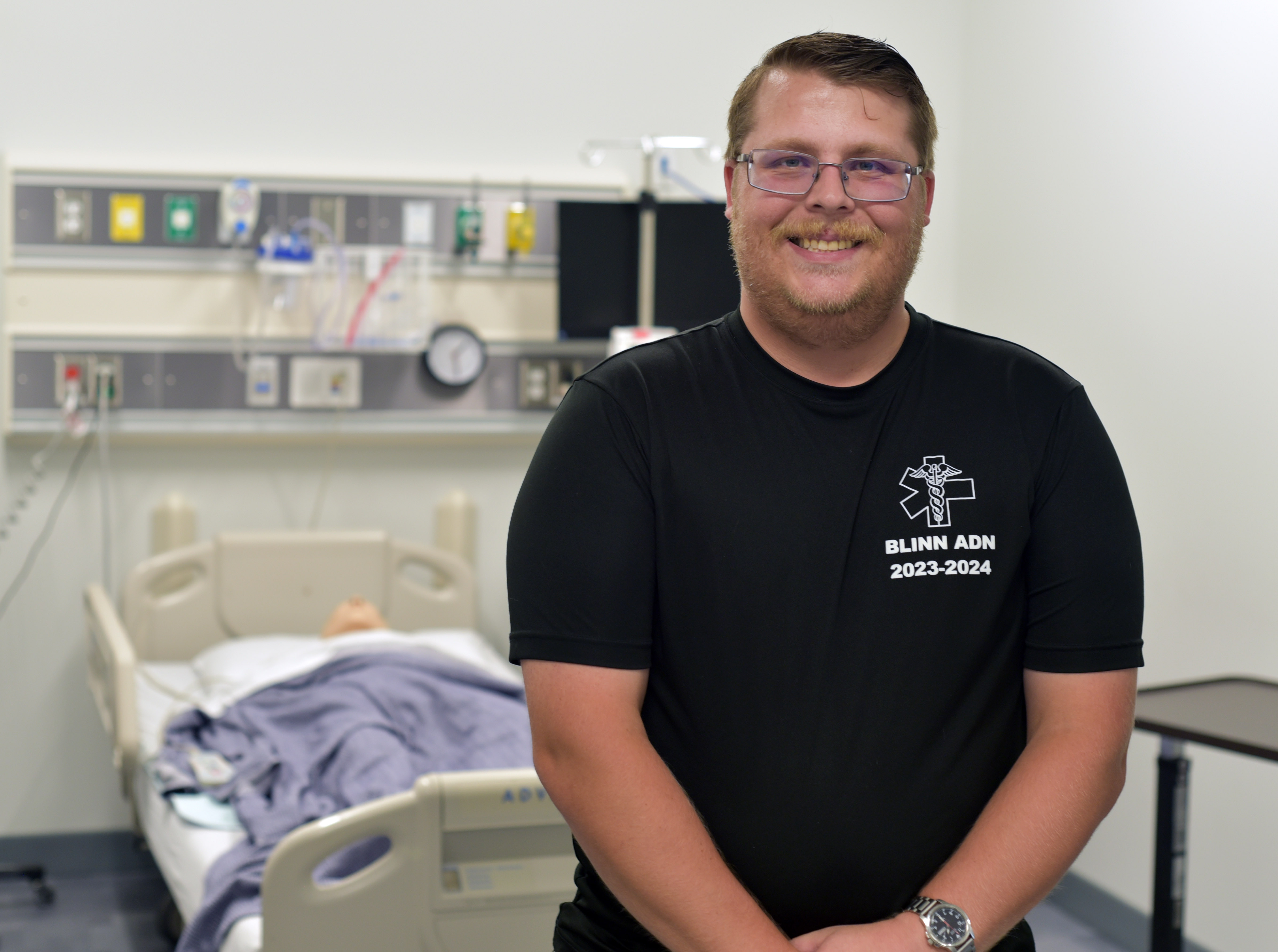Paramedic Program graduate set to earn his nursing degree through Paramedic-to-RN pathway
Caleb Reed will graduate in August with his Associate of Applied Science in Nursing

June 17, 2024
When Caleb Reed decided to transition from his current career as a paramedic to a new role as a registered nurse, he turned to the Blinn College District for the degree he needed.
After all, Blinn had been there in every step of his higher education journey. As a graduate of Pantego Christian Academy in Arlington, Texas, Reed initially came to Blinn seeking his engineering degree as a member of the Texas A&M-Blinn TEAM Program.
When he decided to apply his love of science toward a career in healthcare, Reed enrolled in Blinn’s Emergency Medical Services Program, earning his certification as an Emergency Medical Technician (EMT), then his Paramedic Technology Certificate. When he graduated from the Paramedic Program in 2018, he already had a job lined up as an attendant paramedic with the Montgomery County Hospital District.
“Almost all of the instructors are still here and I still talk to them pretty frequently,” Reed said. “I got tons of clinical experience and I was very, very prepared to go into EMS and to work as a paramedic. Montgomery County Hospital District is one of the very highly rated EMS agencies in the state that does very well with their continuing education and clinical expertise, so I was super excited to get hired on there right out of school.”
Reed found his career as a paramedic to be rewarding, but he continued to look ahead to the next challenge. He found it after Blinn launched its Paramedic-to-RN pathway in 2022. Through the program, Reed and other paramedics could apply their knowledge and skills toward their Associate of Applied Science in Nursing. For Reed, the transition from emergency care to nursing made for an exciting test of his skills.
“We were used to knowing the answer to everything almost immediately EMS-wise, but as nursing students you have to go back and take it back to your foundational steps,” Reed said. “We were all very clinically competent because we all have a lot of years of experience, but that doesn’t always translate directly into nursing. The nursing faculty really helped us shift our mindset.”
Reed particularly thanked Jaime Hardy, who served as his primary professor throughout the program. With a husband who works as a paramedic, Hardy brought a unique perspective to the classroom, Reed said.
“I would recommend Blinn in a heartbeat,” he said. “The program has been phenomenal and I’ve learned a ton, which has made it very rewarding.”
Reed will graduate from the program in August and already has begun interviewing for nursing positions. He also is looking into advancing his education once again, this time by pursuing his nursing bachelor’s degree through Texas A&M University’s online transition program.
“Nursing-wise, the sky is the limit,” he said. “I would love to go to CRNA (Certified Registered Nurse Anesthetist) school and become a nurse anesthetist. It would be a cool mix of what I’m used to with paramedic-style airway management and the nursing-style patient management.”
Blinn’s Paramedic-to-RN Transition Program is based at Texas A&M-RELLIS in Bryan, where students utilize the 16,000-square-foot simulation laboratories located at the RELLIS Academic Alliance Complex and conduct clinicals with local hospitals, including Baylor Scott & White and CHI St. Joseph Health. For more information regarding the Paramedic-to-RN Transition Program, visit www.blinn.edu/adn/paramedic-to-rn.
For information regarding other pathways to an associate degree in nursing, including Blinn’s LVN-Transition Program for working vocational nurses and the traditional Associate Degree Nursing Program, visit www.blinn.edu/nursing.
Enjoy this article? Share it with one click!